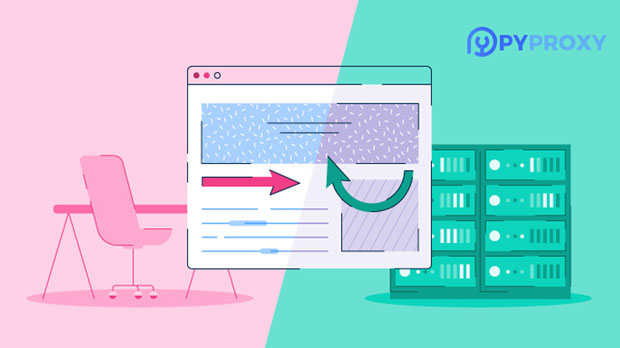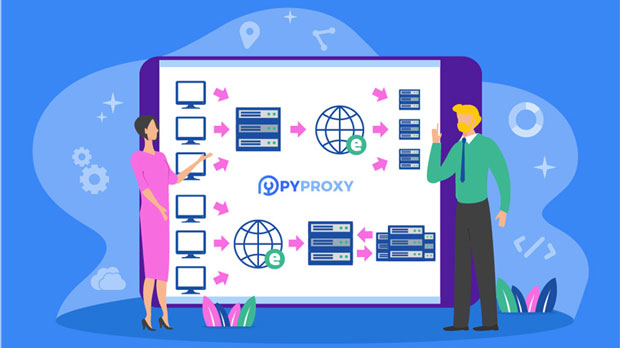In the modern Internet environment, protecting personal privacy and security is the focus of every user's attention. socks5 proxy, as a common proxy protocol, is widely used for purposes such as anonymous browsing, bypassing geographical restrictions, and improving network speed. Compared to traditional HTTP or HTTPS proxies, socks5 proxies can handle a wider variety of network requests and provide higher privacy protection. Through SOCKS5 proxy, users can hide their real IP address, access restricted content, and even optimize network connection performanceThis article will provide a detailed introduction on how to configure SOCKS5 proxy on the Windows operating system. Whether you want to improve anonymity or accelerate your network connection through SOCKS5 proxy, we will help you complete the configuration through simple steps. At the same time, this article will also conduct in-depth analysis on the working principle, applicable scenarios, and common problems of SOCKS5 proxy, ensuring that you can fully understand and effectively use this toolI. Basic Concepts of SOCKS5 Proxy Before starting the configuration, we first need to understand what SOCKS5 proxy is and how it differs from other types of proxies. SOCKS5 is an abbreviation for the fifth generation "Socket Secure" protocol, which is a network protocol used to forward data packets through proxy servers, thereby achieving user anonymity, bypassing network restrictions, and enhancing network performance. SOCKS5 proxy not only supports TCP/IP data transmission, but also UDP protocol, which makes it more flexible and efficient than other types of proxiesThe working principle of SOCKS5 is that when you connect to the network through a SOCKS5 proxy, the proxy server will replace your computer to perform all communication operations, thereby hiding your real IP address. During this process, SOCKS5 proxy does not care about the content of the data, only forwards packets, so it can handle almost all network requests, including browsing web pages, downloading files, using P2P, etcWhy choose SOCKS5 proxy1. Privacy ProtectionSOCKS5 proxy helps users hide their true identity by replacing the original IP address. It can effectively prevent third-party websites from tracking user activities and enhance user anonymity2. Bypass geographical restrictionsMany websites and service providers restrict user access based on geographic location. By using SOCKS5 proxy, you can choose servers from different countries to connect and access content that was previously inaccessible3. Support more protocolsCompared to traditional HTTP proxies, SOCKS5 proxies support multiple protocols, including HTTP, HTTPS, FTP, and more. This makes it suitable for more network application scenarios4. Higher performanceThe connection method used by SOCKS5 proxy is more efficient, and in some cases, using SOCKS5 proxy can improve the stability and speed of network connections3. How to configure SOCKS5 proxy on WindowsConfiguring SOCKS5 proxy on Windows operating system is relatively simple. The following are the detailed steps for configuration:Step 1: Select the appropriate SOCKS5 proxy serviceFirstly, users need to choose a suitable SOCKS5 proxy service provider. There are many service providers on the market that offer SOCKS5 proxies, and some providers also provide free trial services. Common SOCKS5 proxy service providers: PYPROXYWhen choosing, pay attention to the speed, stability, and whether the proxy service provides the server location you need. If you have specific access needs (such as accessing content in a certain region), choosing a service provider with servers in that region would be more appropriateStep 2: Obtain the IP address and port number of the SOCKS5 proxyAfter you register and select the SOCKS5 proxy service, the service provider usually provides an IP address and port number for the SOCKS5 proxy. You need to record this information as it will be needed in the later configuration processFor example, a proxy service provider may provide the following information:-SOCKS5 proxy IP address: 192.168.1.1-SOCKS5 proxy port number: 1080Some service providers may also require you to set a username and password to increase securityStep 3: Configure the SOCKS5 proxy settings for the system1. Open Windows Settings: Click on the Start menu and select "Settings"2. Enter Network and Internet Settings: In the settings window, select the "Network and Internet" option3. Select the "Proxy" setting: In the left menu, click on the "Proxy" option4. Enable manual proxy settings: On the proxy settings page, find "Manual Proxy Settings" and enable it5. Fill in the IP and port of the proxy server: Enter the IP address of the SOCKS5 proxy you obtained in the "Address" box, and enter the port number of the proxy in the "Port" box6. Save Settings: After completion, click the "Save" buttonAt this point, the network traffic of the system will be forwarded through the socks5 proxy server. You can verify whether the proxy has been successfully configured by accessing different websites or servicesStep 4: Test if SOCKS5 proxy is effectiveAfter the configuration is complete, in order to confirm whether the SOCKS5 proxy is effective, you can use the following methods for testing:1. View IP addressView the current public IP address. If the proxy setting is successful, your IP address should be the IP provided by the SOCKS5 proxy server, not your real IP2. Access to restricted contentIf the SOCKS5 proxy you have configured is located in a specific region, you can try accessing content that was originally inaccessible in that region to see if it can be successfully accessed4. Application scenarios using SOCKS5 proxy1. Anonymous browsingSOCKS5 proxy is widely used in scenarios that require anonymous browsing. By hiding their real IP, users can protect their online privacy and avoid being tracked2. Bypass network censorshipIn some regions, due to political, legal, or other reasons, users are unable to access specific websites or services. SOCKS5 proxy can help users bypass these geographical restrictions and access the internet freely3. Accelerate network connectivityIn some cases, using SOCKS5 proxy can help users bypass network bottlenecks and improve network speed, especially when connecting to overseas servers4. Accessing foreign contentIf you want to watch online video content that is only open to a specific region, using a SOCKS5 proxy can allow you to "disguise" as a user from that region and access the content smoothlyFifth, Common Problems and Solutions1. Proxy connection is unstable or slowSolution: Check your network connection to ensure that the SOCKS5 proxy server is not malfunctioning. If possible, choose a more stable and faster SOCKS5 proxy service provider2. Unable to access certain websitesSolution: Try changing the IP address or port of the SOCKS5 proxy server. Some websites may detect proxy servers and block their access3. Proxy settings are invalidSolution: Ensure that you have correctly configured the IP and port of the SOCKS5 proxy in the network settings of your Windows system. If you are using an authenticated SOCKS5 proxy, make sure to enter your username and password correctlyVI. SummarySOCKS5 proxy, as a powerful network tool, has a wide range of application scenarios. It can not only effectively improve user anonymity, bypass geographical restrictions, but also optimize network connections and enhance online experience. By following the detailed steps in this article, you can easily configure SOCKS5 proxy on the Windows operating system and enjoy a more secure and efficient internet experience. Meanwhile, by understanding the working principle and common issues of SOCKS5 proxy, you can better manage and optimize your proxy settings, ensuring network stability and securityWhether it's protecting privacy, breaking geographical restrictions, or improving network performance, SOCKS5 proxy is a solution worth considering. I hope this article can help you smoothly configure and fully utilize this tool to improve your online experience
Jan 06, 2025
![arrow]()


















































